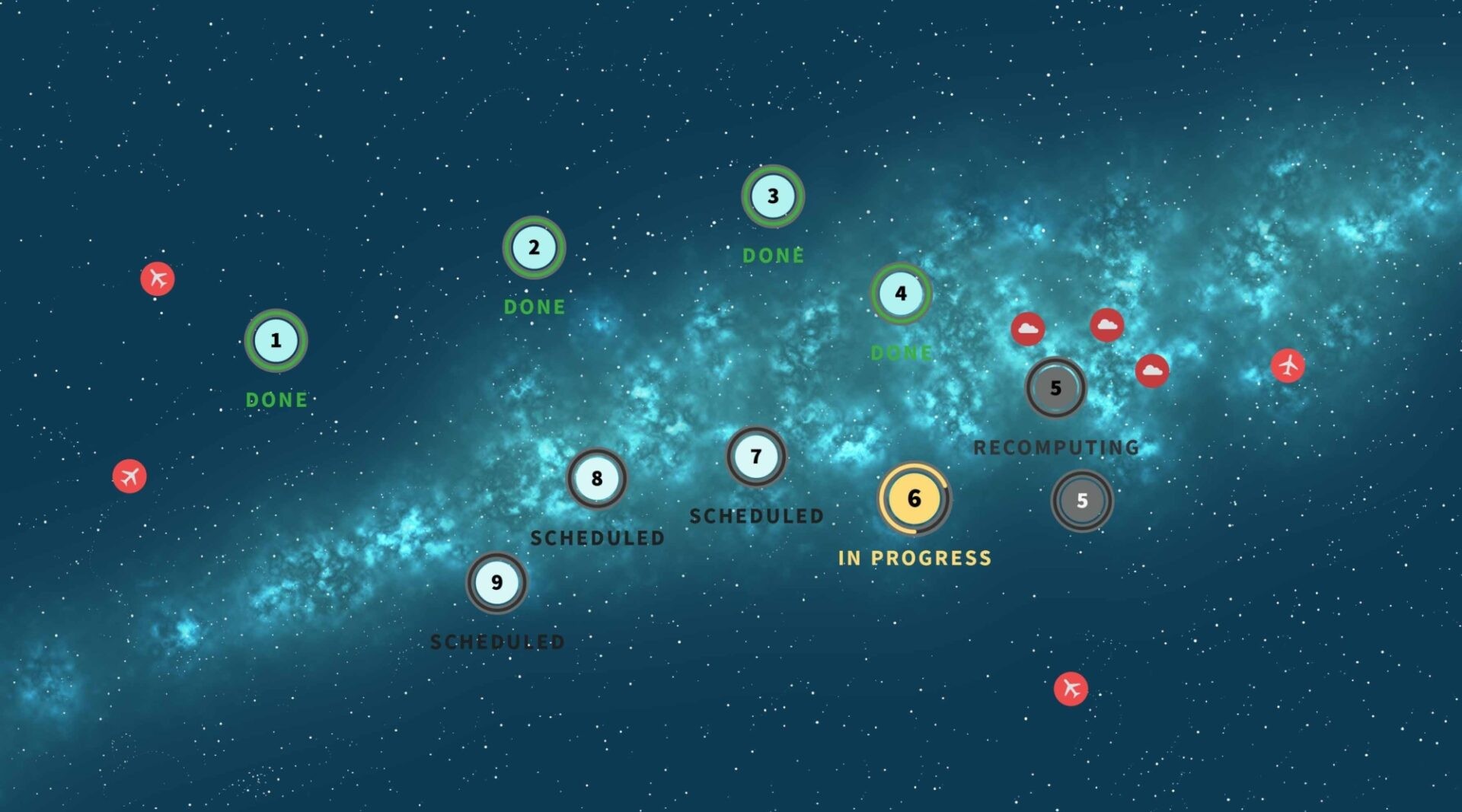Survey Cadence
Rubin Observatory uses a survey telescope, which is designed to move around the sky and take images of all the objects it can see, rather than focusing on specific objects. That means that the resulting data can be used for all kinds of research instead of specific questions that are determined in advance.
The pattern that Rubin Observatory follows to image the sky each night is called its “cadence”—e.g. when, where, how often, in what order, and with which filter it captures images. It might seem like the most sensible cadence would be a systematic back-and-forth pattern, like one you'd use to vacuum the floor. But what happens when the bright moon gets in the way, or the thick atmosphere close to the horizon starts to distort the images? It’s important to take these environmental constraints, along with many others, into account when designing how a survey telescope should move.
In Rubin's case, there was another important set of things to consider—how would different cadences affect different types of science? For example, a cadence that effectively finds moving asteroids might detect fewer supernovae, or vice versa. So how did Rubin Observatory design a cadence that would allow the most scientists to achieve their goals? We asked the scientists to help! For many years, Rubin Observatory worked closely with astronomers, offering simulations and data tools they could use to test how different cadences would affect their specific science. Rubin then used their feedback to decide on a cadence that would offer the most valuable data for everyone. While the end result isn't perfect any single group of scientists, it was scientifically researched to be as valuable for everyone as possible.
Take a moment to picture Rubin Observatory operating each night, its telescope moving quickly and quietly around the sky, the filters on its camera changing automatically every once in a while—it might appear random, but it’s following an automated cadence that was carefully built to maximize science.
Science goals
Discover the key science areas where Rubin Observatory will advance astronomy and astrophysics.

